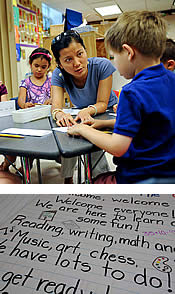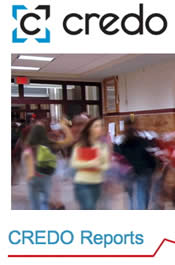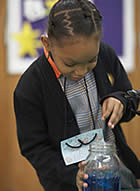
By Hrishi Deshpande, 16, Y-Press
INDIANAPOLIS, IN— When charter schools were first proposed in 1988, they were envisioned as an extension of public schools where teachers could experiment with different educational models. They were intended to be fonts of innovation, freeing teachers from the bureaucratic restrictions of traditional schools and allowing them to communicate and share best practices with their public school counterparts.
In the years since, charter schools have become immensely popular but not in the manner that was first imagined. Almost all operate as alternatives to public schools, not as collaborators. And while many offer curriculum flexibility, research shows the success of their students often is not much better than those from the traditional schools with which they compete.
One of the biggest advantages that charter schools have over traditional public schools is greater autonomy. Most are answerable to some governing group and an authorizer—often a government agency, school district or university—but don’t have to deal with the bureaucracy inherent in school districts with thousands of students.
“The autonomy and flexibility that charter schools enjoy provides them with a tremendous opportunity to innovate and customize their school to meet the needs and interests of students and families,” says Stephan Huh, director of charter schools under the U.S. Department of Education’s Office of Innovation and Improvement.
Customization
Customization can take many forms. Some schools target a specific population, such as non-English-speakers or students at risk of academic failure. Others offer curriculum specializations, such as foreign-language immersion or science, technology, engineering and math (STEM) training.
“For example, here in D.C., we have a Mandarin Chinese immersion, a dual-immersion charter school, where you have four-year-olds spending more than half their day learning in Mandarin Chinese, you know, really preparing them for careers in the future,” Huh said.
Charter schools also can adjust their school schedules in unorthodox ways, by extending the school day or even the school year, or by organizing the school day in innovative ways.
Rachel Maldonado has been a teacher for 10 years, at both public and charter schools. Currently she is a teacher at Monument Lighthouse Charter School on Indianapolis’s Eastside. It is a K-7 school (with a college-prep academy for grades 8 and 9) with a three-point model: “Rigorous Academics, Social Development and Arts Infusion.”
She believes the 500 students at Monument benefit from the individualized instruction and extended school day, which is two hours longer than the nearby public school.
“A typical day in my classroom would start out with relationship building. In the morning, we have morning meeting, when we get to know our students,” she explained.
Maldonado, who has been at the school for three years, also appreciates having longer blocks of instruction time for classes rather than the more typical 45 minutes a day. But she says she’s accountable for students’ failures in a way she never was at the public schools where she taught, in Indiana and Florida.
Accountability
“There is much higher teacher accountability at charter schools, and by that I mean a drive for appropriate test scores,” she said. “You have to get those students to reach those goals. It doesn’t matter if it’s an eighth-grader with a second-grade reading level. By the end of the year, that student has to show improvement and growth of a considerable amount, or has met that grade-level standard.”
These higher standards apply to everyone—students and parents usually sign agreements that outline expectations for students’ academic and behavioral performance and for parental participation.
This focus on goals and benchmarks is important for reporting purposes, Huh said. “When they submit the application … they have to outline the specific performance objectives and how they can be measured,” he said.

- Charter School Performance in Pennsylvania Download PDF
- Multiple Choice: Charter School 16 States Download PDF
As a result, charters are often under more pressure to deliver results, usually in the form of higher test scores. Though many critics question whether scores really measure achievement, Huh argues that they are ultimately beneficial to students.
“I think that’s good for the families and it’s good for the students ’cause it sets those high expectations and focuses attention on academics,” he said.
Mixed results
Regardless, charter schools often struggle to reach those goals, just like traditional schools. A study by Stanford University’s Center for Research on Education Outcomes compared the performance of students at charter schools versus the performance of public school students in 16 states. The study found that only 17 percent of charters had academic gains that were significantly better than public schools. In addition, 37 percent of charters showed gains that were worse than traditional public schools gains.
Diane Ravitch, research professor of education at New York University and former Assistant Secretary of Education, confirmed that while there are a few excellent charter schools, most don’t show markedly better performance than their public equivalents.
“There’s an assumption that’s been created by massive propaganda and PR that charter schools, across the board, are a wonderful alternative, but they’re not.”
Ravitch also says that test scores are erroneous measures of student achievement, and that charter schools take resources away from established public schools. “The funding follows the students, but that doesn’t mean that the cost of running the school [goes down]. They still have to have a building. They still have to heat the building,” she said.
Huh concedes that while siphoning public funds away from public schools is problematic, charter schools deserve a chance to educate a challenging population. In addition, they provide competition, which ultimately benefits families, he said. “It’s forced the traditional sector to kind of change.”
Student demographics
However, competition doesn’t benefit all families. Another problem with charter schools, says Ravitch, is the ability to cherry-pick students. Some charter schools take the best students out of a community, leaving the area public schools with the kids that the charter school doesn’t want, she said.
“[It leaves] the poor communities worse off and with larger shares of the kids with the greatest learning needs, and kids who don’t speak English. The charter schools don’t want them because they don’t have the facilities to teach the ELL’s. And they don’t want the kids with profound disabilities, so the public school in the same neighborhood ends up with a disproportionate share of them and is worse off,” she said.
This dynamic can be observed in New York City. The Harlem Success Academy, a charter school, and P.S. 149, a public school, are located in the same building and draw from the same geographic area. While the charter school seems to be surpassing the public one on student performance—72 percent of students at Harlem Success Academy were reading at grade level, compared with 49 percent at P.S. 149—the demographics of the students might explain the difference.
Despite identical locations, P.S. 149 has more special education students (20 percent compared to less than 17 percent at the Harlem Success Academy), more English Language Learners (13 percent vs. 2 percent) and more homeless students (10 percent vs. less than 1 percent), all populations that challenge a school’s performance rankings.
In the end, the jury is still out on the effectiveness of charter schools. While they have been a boon to many students, they are not the quick cure to the nation’s educational shortcomings. Parents still must weigh their options and decide what is best for each child.
“I think it’s a personal decision for every parent and every student,” Huh said. “I think it depends on where you live and what your options are—that’s the bottom line. This is about providing alternatives and options, where they’re necessary.”
Assistant editor Kuren Sikand, 17, and reporters Justin Herring, 12, and Darius Jordan, 15, contributed to this story.





